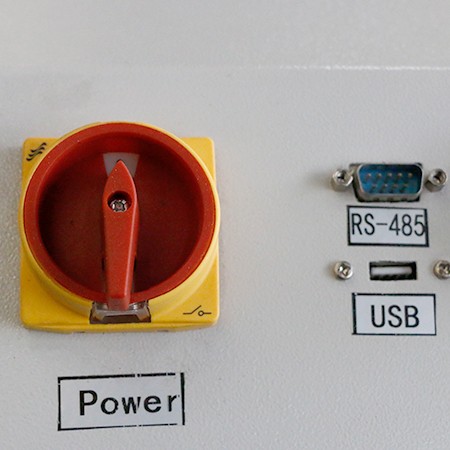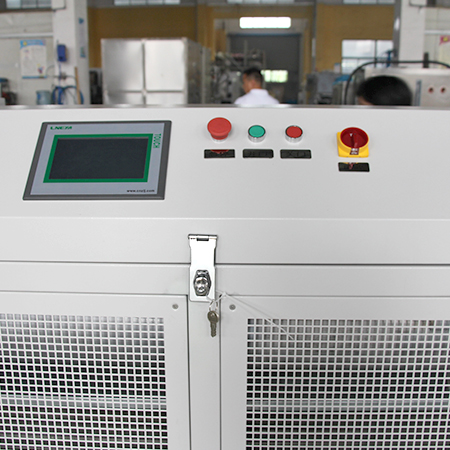What Is Chiller Voltage And How To Select

- 4 Types of Refrigeration Systems Which One Fits Your Facility
- What is a VFD chiller VFD chiller vs Non VFD chiller
- What is a Gas Chiller
- What is a Scroll Chiller
- 2025년 8월
- 2025년 7월
- 2025년 6월
- 2025년 5월
- 2025년 3월
- 2025년 2월
- 2025년 1월
- 2024년 12월
- 2024년 11월
- 2024년 10월
- 2024년 9월
- 2024년 8월
- 2024년 7월
- 2024년 6월
- 2024년 5월
- 2024년 4월
- 2024년 3월
- 2024년 2월
- 2023년 9월
- 2023년 7월
- 2023년 6월
- 2023년 5월
- 2023년 1월
공냉식 냉각기 냉각기 냉각기 설치 냉각기 Chiller Troubleshooting 저온 조립 냉동고 냉각 냉각기 냉각 난방 순환기 냉각 난방 시스템 cooling system 이중층 유리 반응기 동적 온도 제어 시스템 냉동고 가스 냉각 냉각기 난방 순환기 산업용 냉각기 산업용 냉각 산업용 냉동고 산업용 냉장고 재킷 리액터 저온 냉각기 뉴스 제약 냉각기 공정 냉각기 원자로 냉각기 원자로 냉각 원자로 냉각 가열 원자로 가열 냉각 리액터 시스템 냉장 서큘레이터 냉장 냉각기 스크류 냉각기 반도체 냉각기 반도체 테스트 냉각기 sundi tcu 온도 제어 테스트 챔버 온도 조절기 초저온 냉각기 차량 테스트 냉각기 물 냉각기 수냉식 냉각기 wtd
In industrial production, 냉각기 are key temperature control equipment. Many buyers focus on cooling capacity, temperature accuracy, and brand. But they often overlook a crucial point — voltage. Some may think, “Isn’t it just plug and play?” Not really. If the voltage doesn’t match, the chiller may fail to start. It can also cause compressor overload, damage the control system, and even risk the whole production line’s safety. So, what is voltage? And how do you pick the right chiller voltage?
What is chiller voltage?
Chiller voltage is the level of electric power it needs to run properly. It affects whether the chiller can start and run smoothly. It also impacts the safety of electrical parts and the chiller’s lifespan. Think of it like blood pressure for a person — you need the right range to stay healthy. Too low voltage is like lack of oxygen, making the compressor hard to start and reducing cooling efficiency. Too high voltage is like over-pressurizing the heart, causing parts to overheat, insulation to wear out, and control boards to burn out.

Common types of chiller voltage
The common chiller voltages are single-phase AC, three-phase AC, and custom voltages.
Single-phase AC
Single-phase power is typical for small chillers. These chillers serve labs, medical devices, or light industrial uses. In North America, they often run on 110V or 120V/60Hz. In China, it’s usually 220V/50Hz. Single-phase chillers are easy to connect. Just plug into standard power outlets. They work well for low-power needs.
But single-phase power can struggle under long, heavy loads. Voltage can fluctuate and affect cooling stability. Many labs start with single-phase chillers but switch to three-phase as their heat load grows.
Three-phase AC
Three-phase power is the main supply for medium to large industrial chillers. In China, 380V/50Hz is common. Europe mostly uses 400V/50Hz. North America often uses 480V/60Hz. Three-phase power is more stable and can run big compressors. It fits long, heavy-duty cooling jobs well. That’s why pharmaceutical and chemical plants prefer it.
Installing three-phase chillers requires skilled electricians. You also need enough power capacity at the site.
Custom Voltage
Some chillers use custom voltages for exports or global plants. For example, parts of the US need 208V/60Hz. Some industries or regions use 415V, 440V, or even 575V. Custom voltage matches local power standards exactly. This reduces energy loss from transformers and keeps the chiller running well.
But custom voltage chillers usually take longer to deliver and cost more. If you move the equipment to a place with a different voltage later, you might have to change or upgrade the electrical system.
| Region | Common Single-phase Voltage | Common Three-phase Voltage |
| North America | 120V / 60Hz | 208V, 230V, 460V |
| Europe/Asia | 220-240V / 50Hz | 380V, 400V, 415V |
| 중국 | 220V / 50Hz | 380V / 50Hz |
How Does Voltage Affect a Chiller?
Starting the Equipment
If the voltage doesn’t match the chiller’s rated voltage, the unit may not start at all. For example, a 380V three-phase chiller won’t start if you plug it into a single-phase 220V power supply. On the other hand, if a 220V chiller is connected to 380V, it can instantly burn out electrical parts and even cause an electrical fire.

Running Stability
산업용 냉각기 are sensitive to voltage changes during heavy loads. Low voltage makes the compressor hard to start and can cause frequent overload trips, which leads to overheating and insulation damage over time. High voltage speeds up wear and tear on motors and control systems, shortening the chiller’s life.
Cooling Performance
The speed of compressors and pumps depends closely on voltage. If voltage is below the rated level, cooling power drops, temperatures take longer to recover, and the chiller might fail to hold set temperatures. High voltage might temporarily increase speeds, but it raises energy use and causes faster mechanical wear.
안전
High voltage, phase loss, or wrong phase sequence can cause electrical faults inside the chiller. This can lead to short circuits, equipment damage, or fires. Most chillers have built-in protections like over-voltage, under-voltage, phase loss, and phase sequence alarms. But these safety features only reduce risks—they don’t replace proper voltage matching.
How to Choose the Right Voltage?
Choosing the right chiller voltage means matching your site’s power supply while meeting the chiller’s needs.
Site Power Supply
If your factory or lab only has single-phase 120V, picking a 120V single-phase chiller is the easiest choice. Many small labs, medical facilities, or light industrial shops fit this case. Buying a three-phase 230V chiller won’t work without extra transformers—and that’s costly.
Chiller Power
The bigger the chiller, the more power it needs. Generally, chillers under 5kW can use single-phase power. But most industrial chillers above 10kW require three-phase power to run compressors and pumps reliably.


Power Standards
Different countries have different industrial voltage standards. For example, the US often uses three-phase 208V or 460V, Japan has a 200V system, and Europe mostly uses three-phase 400V. For exports or multinational sites, it’s best to choose chiller manufacturers (like LNEYA) who support custom voltages to avoid power mismatch during installation.
Future Needs
Many companies buy a chiller for a small device at first. Later, when they expand or change processes, or add bigger reactors, the power and voltage may not be enough. Then they must buy new chillers. If that might happen, it’s smarter to start with a three-phase chiller that supports higher power.
결론
Whether you need single-phase or three-phase chillers, LNEYA offers professional solutions. We cover common voltages and can customize voltage specs based on your power supply and local standards. This ensures your equipment works right out of the box and runs steadily. Choose LNEYA to make your cooling system more reliable.
자주 묻는 질문
관련 냉각기
문의하기
TEL:전화
이메일: 이메일
위챗 및 왓츠앱:

Wechat QR

문의 사항이 있으시거나 견적이 필요하신가요? 아래 양식을 작성해 주시면 저희 팀이 24시간 이내에 답변해 드리겠습니다.
 LNEYA 산업용 냉각기 제조업체 공급 업체
LNEYA 산업용 냉각기 제조업체 공급 업체
















